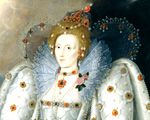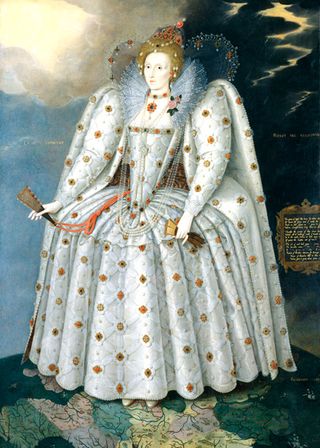Sir Roy Strong’s favourite painting
Sir Roy Strong on his favourite painting ‘of England in its greatest age’



Roy Strong says:
‘I was haunted by this picture from the age of 15. It has appeared in so many of my books, and I became, at 31, the director of the gallery in which it hangs. At 73, it still speaks to me of England in her greatest age and of her greatest ruler’
Art critic John McEwen says:
The directorship of Dr Strong, as he was then, was the National Portrait Gallery’s finest hour. A virtual storage facility was suddenly transformed, with the Doctor seen off-duty in velvet and ruffles, the art world’s fifth Beatle. A. S. Byatt described him at this time as ‘an icono-grapher, possibly even an idolater, of the Virgin Queen’, and one of his first acts as our youngest-ever director of a national gallery was to get his favourite picture cleaned, thus affording him ‘the thrill of seeing the great full-length of Gloriana, the ‘Ditchley Portrait’, stripped of crude overpaint’.
‘Ditchley’ because the picture’s first mention is in 1718 at the Elizabethan house of that name. It was built in 1592 by Sir Henry Lee, for many years the Queen’s Champion at the ceremonial tilts or jousting tournaments.
The tilts were of considerable ritualistic import-ance (Royal Ascot a faint echo), with the tournaments and the queen’s portraits growing in splendour with her achievements. The 1590 tilt was of special significance, the first since the defeat of the Spanish Armada, and the portrait, probably commissioned by Lee, who retired that year, commemorates it. Elizabeth, in her magnificent jewelled dress, bestrides the globe, her all-conquering power even banishing the storm.
The world shown is mostly southern England, her feet neatly planted on Oxonium (Oxford), Ditchley’s county. Elizabeth never ventured north of the Trent or west of the Severn, but she did inaugurate Ditchley. During the festivities, she acted the Fairy Queen, ‘discovering’ Sir Henry ‘slumbering’ in an enchanted grove. They were both nearly 60.
Sign up for the Country Life Newsletter
Exquisite houses, the beauty of Nature, and how to get the most from your life, straight to your inbox.
* For more fine art articles like this, subscribe and save
Country Life is unlike any other magazine: the only glossy weekly on the newsstand and the only magazine that has been guest-edited by HRH The King not once, but twice. It is a celebration of modern rural life and all its diverse joys and pleasures — that was first published in Queen Victoria's Diamond Jubilee year. Our eclectic mixture of witty and informative content — from the most up-to-date property news and commentary and a coveted glimpse inside some of the UK's best houses and gardens, to gardening, the arts and interior design, written by experts in their field — still cannot be found in print or online, anywhere else.
-
 A well-connected rural playground with 23 acres on the edge of the South Downs National Park
A well-connected rural playground with 23 acres on the edge of the South Downs National ParkOld House Farm is an impressive family home with a wealth of amenities that would inspire any rural passion.
By Arabella Youens Published
-
 The UK gets its first ‘European stork village’ — and it's in West Sussex
The UK gets its first ‘European stork village’ — and it's in West SussexAlthough the mortality rate among white storks can be up to 90%, the future looks rosy for breeding pairs in southern England.
By Rosie Paterson Published
